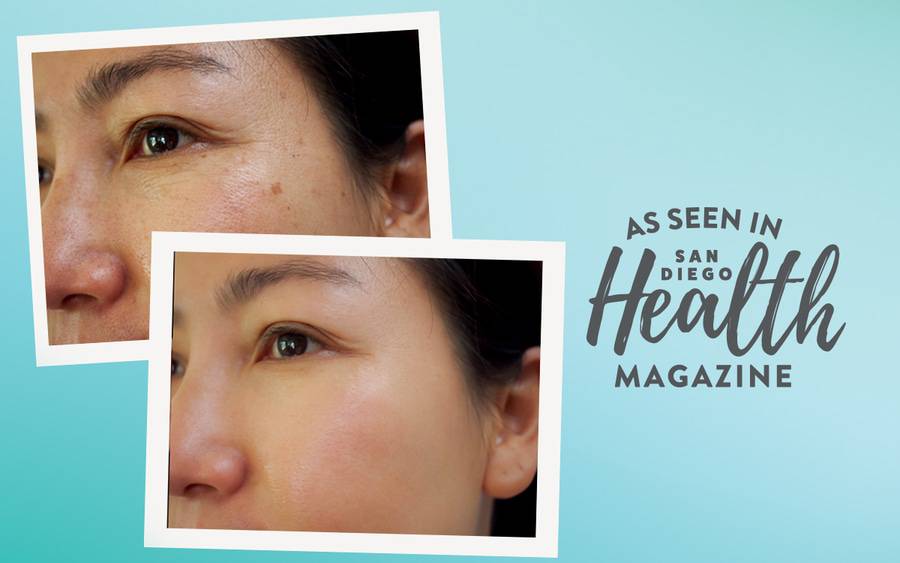Removing Dark Spots with Photofacial Treatment
Noninvasive treatment can undo sun damage

Noninvasive treatment can undo sun damage
Age spots, sunspots, liver spots, overactive pigment — whatever you call it, the dark spots that often appear on our skin as we age can be bothersome and unsightly. And the condition is exceedingly common.
These spots — technical name “lentigines” — resemble freckles and hormone-triggered melasma but are darker and do not fade with a lack of sun exposure. They can appear on skin of any color but are more common in people with lighter skin.
Edward Ross Jr., MD, a cosmetic dermatologist at Scripps Clinic Carmel Valley, says that since age and ultraviolet light are triggers, the spots can begin to appear around age 25 and often affect areas typically exposed to sunlight, like the face, chest, hands, arms and legs. “The best way to prevent them is avoiding UV light, which is almost impossible,” he explains.
There is good news, though: Unlike a leopard, you can change your spots. Lentigines are easily treated via laser and other devices that target concentrations of melanin, the gold standard being intense pulsed light treatment (IPL).
What is photofacial?
Sometimes referred to as a photofacial, IPL is an effective, noninvasive and relatively inexpensive way to even out skin tone and reduce or even erase the signs of sun damage.
“It has a lot of advantages,” says Dr. Ross. “It covers a lot of ground fast — we can do a whole leg or arm in 10 to 20 minutes — but it’s not so good once the spots get lighter.”
What are other treatments for dark spots?
Alexandrite laser treatment also targets skin pigmentation and is used to treat lighter lentigines. A third treatment is a fractional laser that creates a dot pattern on the skin, which can be used to treat darker spots.
Topical retinol and vitamin C products, chemical peels and hydroquinone can improve the appearance of dark spots, but likely won’t remove them completely.
Prevent sun damage
Short of living like a vampire, it’s impossible to prevent photoaging caused by UV light. But minimizing your exposure can lower your risk for sun damage and skin cancer. Limit time outdoors to early morning and late evening, apply sunscreen daily and wear clothing with as much coverage as you can.
“You have to find a happy medium,” says Dr. Ross. “If you really love the outdoors, just try to do your best to be careful.”
Check your skin
Most people get savvy about the sun as they get older, but unfortunately, the damage might already be done.
Lentigines aren’t harmful, but sometimes a lentigo maligna, an early form of melanoma, can blend in with the bunch, or can remain or return after treatment. “If you’re going to embark on an aesthetic journey, make sure you’re not missing something medical,” says Dr. Ross.
Watch for spots that look unusual and remember the “ABCDE” rule. Keep an eye out for:
- Asymmetry
- An irregular Border
- Uneven Color
- A Diameter the size of a pencil eraser or larger
- Evolution in size, shape, or color.
“If you have a brown spot that looks like the ugly duckling, you should see a dermatologist,” says Dr. Ross.

This content appeared in San Diego Health, a publication in partnership between Scripps and San Diego Magazine that celebrates the healthy spirit of San Diego.